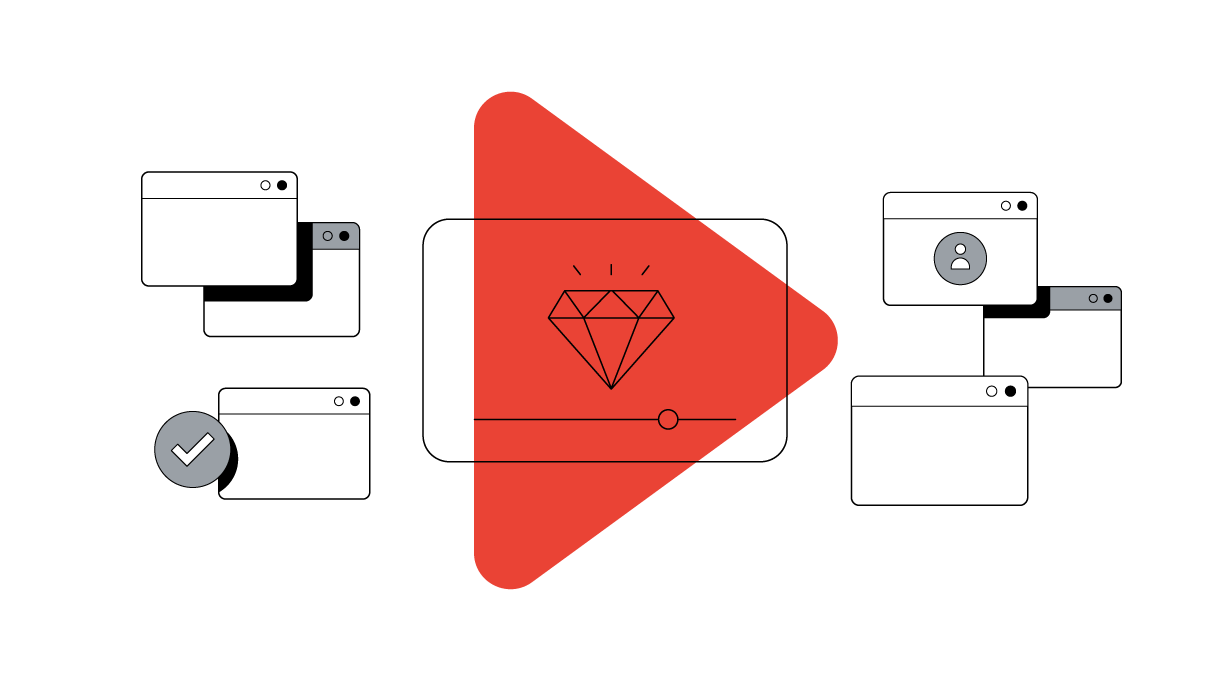With digital advertising offering greater possibilities for measurement than ever before, 61% of CMOs say they face increasing pressure to prove the value of their activities.1 But marketers’ confidence in measuring channel performance varies significantly. A recent Google survey of EMEA marketers revealed that among all digital channels, they’re least confident in their ability to measure success in video.
What is it that makes marketers so uncertain about video? The first reason stems from precedents set by TV. When brand messaging first came to television screens, marketers never presumed viewers would interact with it. The main goal was for the consumer to watch and hopefully remember the ad – but obviously not click on it. Digital video introduced the concept of clicking, and many advertisers reflexively started to prioritise the click rather than the view.
The second contributing factor is attribution. When digital advertising originated, it wasn’t associated with upper funnel activity. PPC dealt with lower funnel activities based on users’ actions in the form of clicks, so attribution modelling was set up on that basis. And this is the source of the conundrum: people aren’t necessarily conditioned to click on video ads, but digital attribution depends on the click. Until now, there have been few ways to translate impressions to attribution.
DoubleClick is tackling these issues by developing new tools for video measurement, but here we’ll share ways that some advertisers have successfully measured the impact of video using only basic tools and the limited budget.
Brand Consideration Uplift
Together with Czech consumer electronics retailer CZC.cz, we ran a three-month campaign solely on YouTube. The goal was to attract new customers while increasing brand awareness and consideration of CZC.cz. For measurement, we used a YouTube Brand Lift survey.
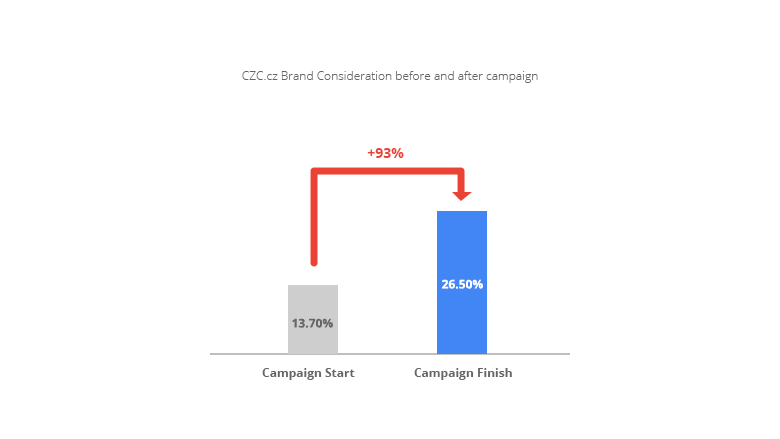
The campaign consisted of more than 20 geeky in-stream and 360-degree videos promoted only on YouTube. We measured consideration and awareness at the beginning and at the end of the campaign. Thanks to using tailor-made YouTube creatives and proper campaign mechanics, the activity almost doubled consideration for the CZC.cz brand.
Brand Search Uplift
In 2016, the global average for growth in search queries for brands that advertised on YouTube was 13%. In other words, if you ran a YouTube campaign, you’d record on average a 13% boost in Google searches for your brand among exposed users, suggesting that video advertising on YouTube really does change consumer behavior.
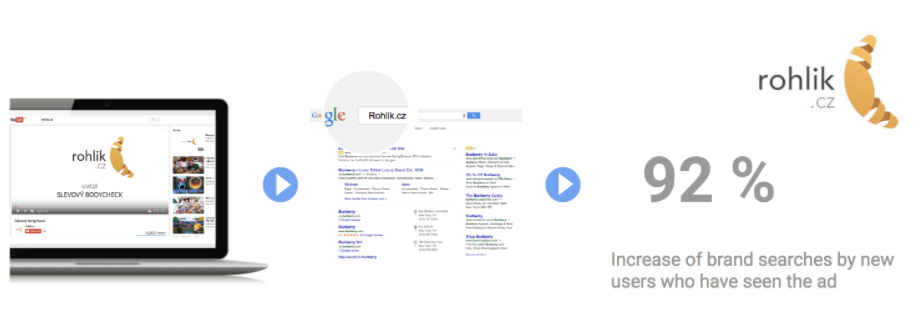
Online supermarket Rohlik.cz used the Brand Lift solution to measure Google searches as a way of determining the reaction of people who had never visited their site before. They saw a 92% increase in brand searches among users who watched their YouTube video – much higher than the global average.
Conversion Rate Uplift
One of the essential metrics in performance marketing is conversion rate, and video advertising can produce a tangible impact here as well. During their Christmas campaign, Slevomat tested how video affected their conversion rate in display. The test worked by creating a remarketing list of users who saw the video ad, and further segmented that audience according to users who had visited the advertiser’s site in the last year and those who had not.
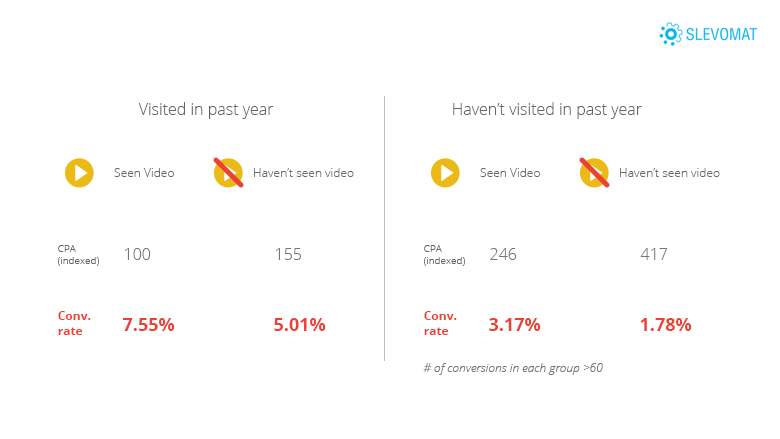
This case illustrates the immediate impact video advertising can have on lower funnel metrics, even though branding is often considered a long-term activity. A test like this one can be easily replicated by any advertiser who has videos and banner ads, and collects conversions.
Sales Impact
This method is the most advanced way of proving the value of video. It requires more investment and more communication through the entire purchase funnel. In this case we used Google Analytics’ multi-channel funnels impression beta, which allowed whitelisted advertisers to add impressions of video and display (served on Google) into their conversions paths. Their conversions paths immediately became much more complicated, but we were able to overcome one of the biggest obstacles in measuring video – the absence of clicks.
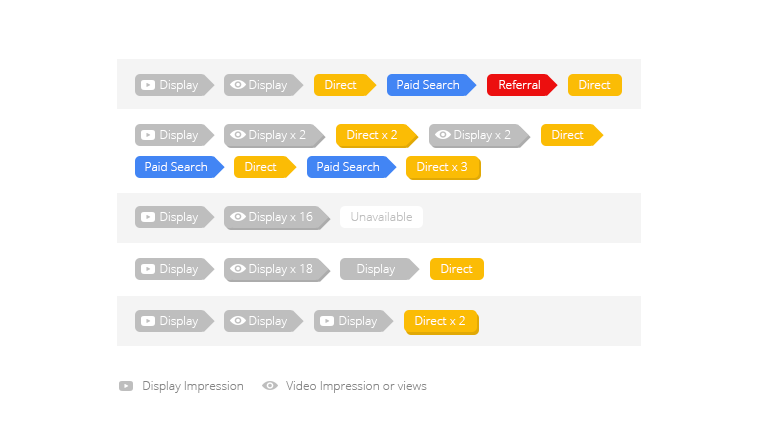
Even in this beta if we used most common attribution model – last non-direct click – we weren’t able to see any value in video advertising. What we saw with these models was that most of the video value was attributed towards brand campaigns or simply direct visits. So without this beta we might assume that people simply come to the website; the beta showed however that a video impression might be the action that triggered visit and conversion. In order to see the real value of video in driving sales, we need to apply new way of evaluating it. Together will CZC.cz and Slevomat.cz, we applied custom conversion segments in Google Analytics and counted value for only those conversion paths that started with a YouTube ad impression.
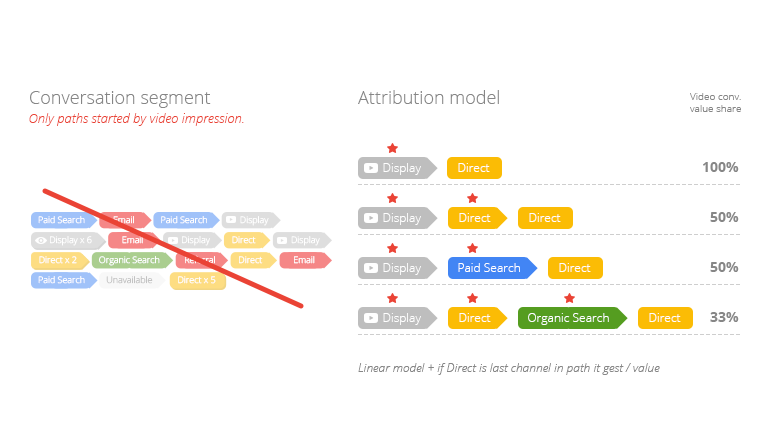
If the video impression occurred in the middle of the path, we did not attribute any value to it. Because the default time period for remembering a cookie for Google Analytics is 90 days, we only took credit for conversions when users hadn’t been to the website in the past 90 days and had started their conversion path with a video impression. The second element was a custom attribution model. Due to the high volume of scenarios where users saw an ad and went directly to the website, we used a linear model that excluded direct visits if they were the last action in purchase path.
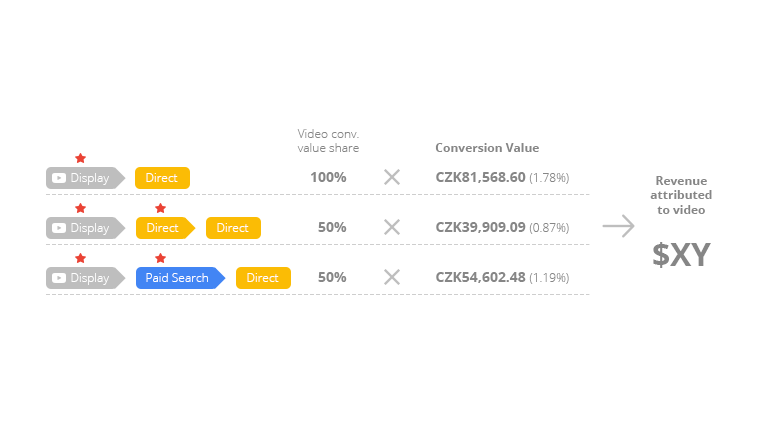
For the final assessment of attributed value, we needed to specify how long the effect of the viewed video ad might be. As a percentage of cost of sales, we observed that seven days after viewing the video users did not make additional purchases, while the majority of conversions took place within three days of seeing the video ad. So for this model we agreed on setting the conversion lag window for seven days.
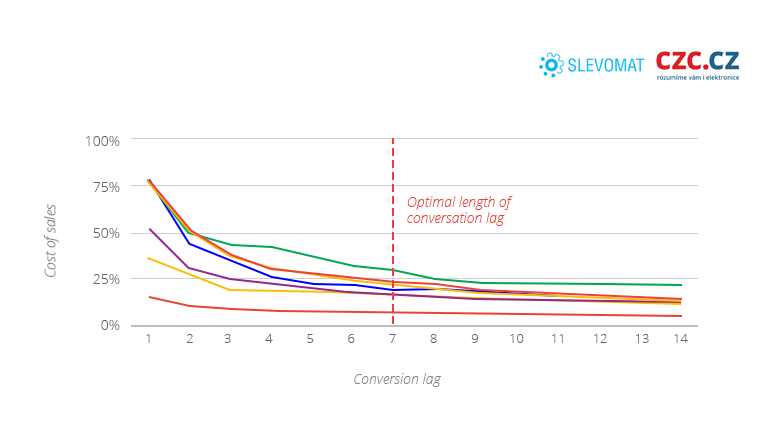
When we were able to derive attributed value and costs of the campaigns, we could easily calculate the costs of sale for video advertising. For these three retailers, we were able to record costs of sales from 10% to 50%.
How to Measure the Impact of Video
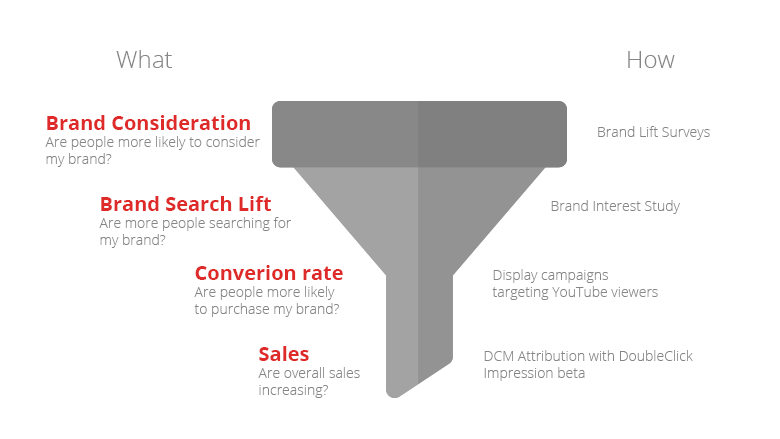
Every advertiser can measure impact of his video campaigns and compare campaign to each other. Here are simple steps to getting it right:
WHAT
- Identify conversion paths where video appears
KPI
- Determine the goal, such as website visits, number of conversions and so on
HOW
- Create a separate AdWords account only for YouTube
- Exclude people who visited the site in the last 90 days
- Implement unique conversion tags, such as for visits or purchases
- Shorten conversion lag to seven days
- Measure visits and number of conversions triggered by YouTube advertising
With this easy technique you can use YouTube as a pure acquisition channel and attribute conversions to YouTube, because you can be confident that people were moved to visit your site thanks to video.


